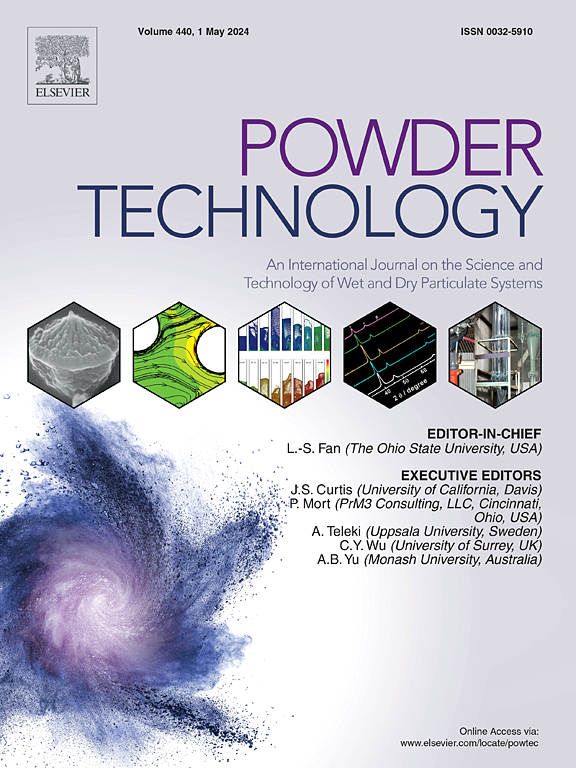Atomistic insights into the reaction mechanism during the collision between Ni and Al nanoparticles in an oxygen environment
IF 4.5
2区 工程技术
Q2 ENGINEERING, CHEMICAL
引用次数: 0
Abstract
The chemical reaction between Ni and Al serves as a typical subject for the impact energy release of active metals. In fact, oxygen in the air will inevitably participate in the reaction process. This study systematically explores the various reaction mechanisms during the collision between Ni and Al nanoparticles in an oxygen environment through molecular dynamics simulations with reactive force fields. After elastic-plastic deformation, both Al and Ni nanoparticles can experience successive melting and micro-explosion triggered by exothermic reaction. Then, Al and Ni clusters are ejected into oxygen, resulting in a higher degree of oxidation reaction than intermetallic reaction. Moreover, the coupled development of intermetallic reaction and oxidation reaction is analyzed. Part of Al and Ni will form Al-O clusters and Ni-O clusters, respectively. The Al-Ni-O clusters are also observed via two pathways: (1) Al and Ni nanoparticles collide to induce intermetallic reactions forming Ni-Al compounds, followed by oxidation reactions; (2) Al-O clusters and Ni-O clusters react separately with Ni or Al. The oxidation clusters mainly exhibit approximately spherical and short-chain shapes with their size distribution conforming to the modified power-law distribution formula. Finally, the Al-Ni-O clusters are the low-coordination structure and account for about 70 % of the oxidation products in our simulation conditions. Enhancing velocity will cause the fragmentation of Al nanoparticles and accelerate the micro-explosion of Ni nanoparticles, consequently raising the reaction rate, and increasing the size of the nanoparticles raises the final number of Ni-Al intermetallic bonds, oxidative bonds, and the size of oxidation clusters. This study provides new insights into the potential reaction mechanisms of the active metal materials in the air environments.

对镍和铝纳米粒子在氧气环境中碰撞反应机理的原子论见解
镍和铝之间的化学反应是活性金属冲击能量释放的典型主题。事实上,空气中的氧气不可避免地会参与反应过程。本研究通过反应力场分子动力学模拟,系统地探讨了镍和铝纳米粒子在氧气环境中碰撞时的各种反应机制。在发生弹塑性形变后,铝纳米粒子和镍纳米粒子会在放热反应的触发下相继发生熔化和微爆炸。然后,铝和镍簇射向氧气,从而产生比金属间反应程度更高的氧化反应。此外,还分析了金属间反应和氧化反应的耦合发展。部分 Al 和 Ni 会分别形成 Al-O 簇和 Ni-O 簇。Al-Ni-O簇也是通过两种途径观察到的:(1)Al和Ni纳米粒子碰撞诱发金属间反应,形成Ni-Al化合物,然后发生氧化反应;(2)Al-O簇和Ni-O簇分别与Ni或Al发生反应。氧化簇主要呈现近似球形和短链形状,其尺寸分布符合修正的幂律分布公式。最后,Al-Ni-O 簇为低配位结构,在我们的模拟条件下约占氧化产物的 70%。提高速度会导致 Al 纳米粒子破碎,加速 Ni 纳米粒子的微爆炸,从而提高反应速率,而增大纳米粒子的尺寸则会提高 Ni-Al 金属间键、氧化键的最终数量和氧化簇的尺寸。这项研究为了解活性金属材料在空气环境中的潜在反应机制提供了新的视角。
本文章由计算机程序翻译,如有差异,请以英文原文为准。
求助全文
约1分钟内获得全文
求助全文
来源期刊

Powder Technology
工程技术-工程:化工
CiteScore
9.90
自引率
15.40%
发文量
1047
审稿时长
46 days
期刊介绍:
Powder Technology is an International Journal on the Science and Technology of Wet and Dry Particulate Systems. Powder Technology publishes papers on all aspects of the formation of particles and their characterisation and on the study of systems containing particulate solids. No limitation is imposed on the size of the particles, which may range from nanometre scale, as in pigments or aerosols, to that of mined or quarried materials. The following list of topics is not intended to be comprehensive, but rather to indicate typical subjects which fall within the scope of the journal's interests:
Formation and synthesis of particles by precipitation and other methods.
Modification of particles by agglomeration, coating, comminution and attrition.
Characterisation of the size, shape, surface area, pore structure and strength of particles and agglomerates (including the origins and effects of inter particle forces).
Packing, failure, flow and permeability of assemblies of particles.
Particle-particle interactions and suspension rheology.
Handling and processing operations such as slurry flow, fluidization, pneumatic conveying.
Interactions between particles and their environment, including delivery of particulate products to the body.
Applications of particle technology in production of pharmaceuticals, chemicals, foods, pigments, structural, and functional materials and in environmental and energy related matters.
For materials-oriented contributions we are looking for articles revealing the effect of particle/powder characteristics (size, morphology and composition, in that order) on material performance or functionality and, ideally, comparison to any industrial standard.
 求助内容:
求助内容: 应助结果提醒方式:
应助结果提醒方式:


